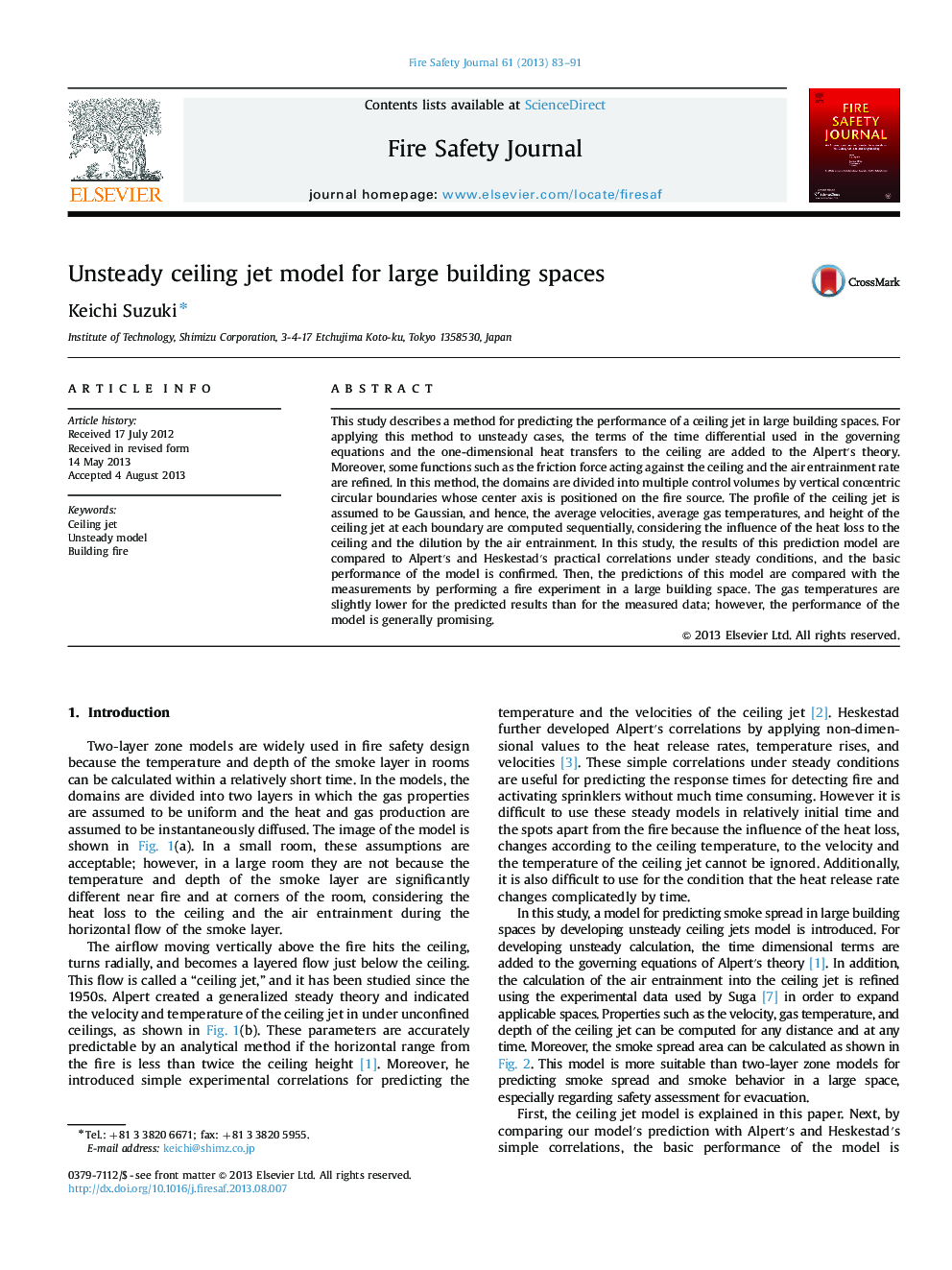| Article ID | Journal | Published Year | Pages | File Type |
|---|---|---|---|---|
| 6742180 | Fire Safety Journal | 2013 | 9 Pages |
Abstract
This study describes a method for predicting the performance of a ceiling jet in large building spaces. For applying this method to unsteady cases, the terms of the time differential used in the governing equations and the one-dimensional heat transfers to the ceiling are added to the Alpertâ²s theory. Moreover, some functions such as the friction force acting against the ceiling and the air entrainment rate are refined. In this method, the domains are divided into multiple control volumes by vertical concentric circular boundaries whose center axis is positioned on the fire source. The profile of the ceiling jet is assumed to be Gaussian, and hence, the average velocities, average gas temperatures, and height of the ceiling jet at each boundary are computed sequentially, considering the influence of the heat loss to the ceiling and the dilution by the air entrainment. In this study, the results of this prediction model are compared to Alpertâ²s and Heskestadâ²s practical correlations under steady conditions, and the basic performance of the model is confirmed. Then, the predictions of this model are compared with the measurements by performing a fire experiment in a large building space. The gas temperatures are slightly lower for the predicted results than for the measured data; however, the performance of the model is generally promising.
Related Topics
Physical Sciences and Engineering
Engineering
Civil and Structural Engineering
Authors
Keichi Suzuki,
